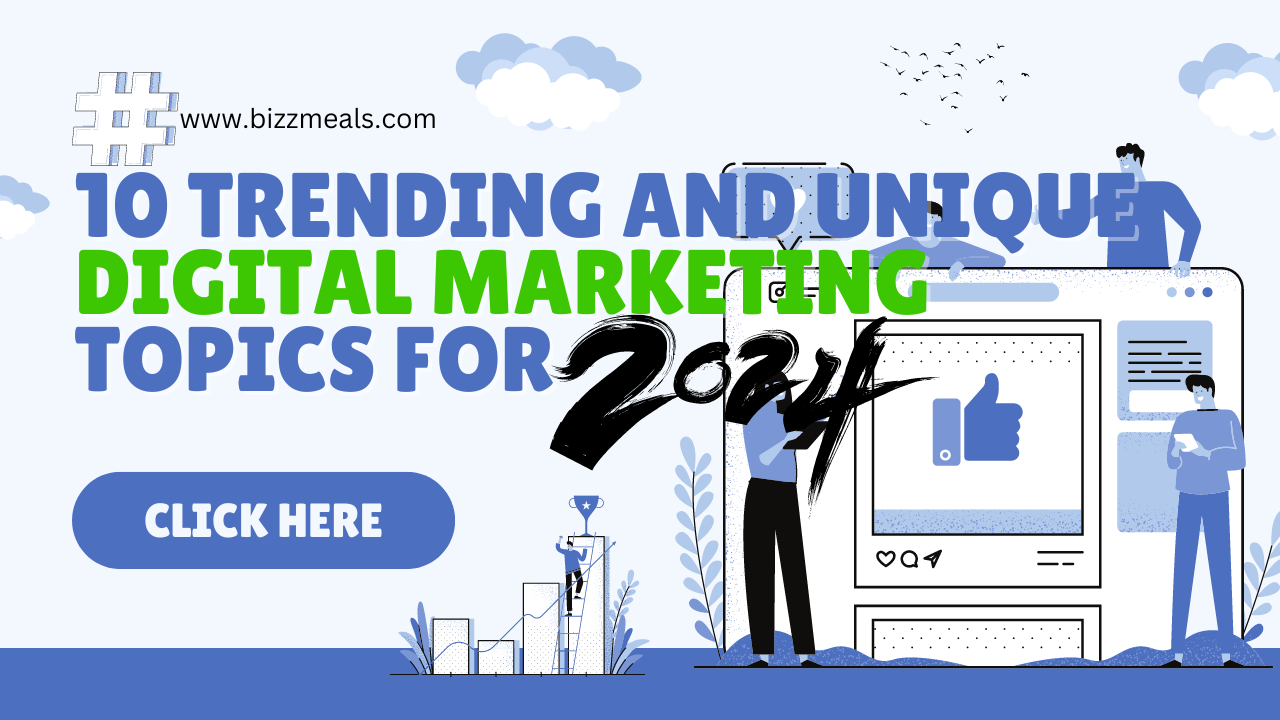No products in the cart.
The Future of Digital Marketing: Eco-Friendly Practices for a Greener 2024

Table of Contents
- Introduction
- The Rise of Eco-Friendly Marketing
- Understanding Digital Carbon Footprint
- Key Strategies for Sustainable Digital Marketing
- Green Web Hosting
- Energy-Efficient Websites
- Sustainable Content Creation
- Eco-Friendly Email Marketing
- Benefits of Sustainable Digital Marketing
- Positive Brand Image
- Cost Savings
- Long-Term Sustainability
- Case Studies of Successful Eco-Friendly Marketing Campaigns
- Challenges in Implementing Sustainable Practices
- Technological Barriers
- Cost Implications
- Consumer Awareness
- Future Trends in Sustainable Digital Marketing
- Increased Use of Renewable Energy
- Rise of Digital Sustainability Certifications
- Conclusion: Towards a Greener Digital Future
- FAQ Section
Introduction
click here to Explore Voice Search Optimization
In 2024, the importance of sustainability has permeated every aspect of business, including digital marketing. As consumers become more environmentally conscious, brands are recognizing the need to adopt eco-friendly marketing strategies. Sustainable digital marketing practices not only help reduce a brand’s carbon footprint but also enhance its reputation and appeal to the growing segment of eco-aware consumers. Tech In Asia
This article explores the growing importance of sustainable digital marketing practices and provides actionable strategies for brands to reduce their digital carbon footprint. We will delve into the benefits, challenges, and future trends of eco-friendly marketing, with a positive outlook on the transformative impact of sustainability on the digital marketing landscape. HubSpot Blog
The Rise of Eco-Friendly Marketing
Eco-friendly marketing has gained significant traction over the past decade. Initially driven by regulatory pressures and the desire to comply with environmental standards, brands now actively seek to implement green practices as part of their core business strategies. This shift is largely due to the increasing demand from consumers for sustainable products and practices. MarketingProfs
In 2024, eco-friendly marketing is no longer a niche trend but a mainstream approach adopted by leading brands globally. The rise of digital technologies has enabled businesses to reach wider audiences while minimizing environmental impact. However, the digital realm also poses unique challenges, such as the energy consumption of data centers and the carbon footprint of online activities. This makes it crucial for marketers to adopt sustainable practices in their digital efforts. Bangalore Mirror
Understanding Digital Carbon Footprint
A digital carbon footprint refers to the total amount of greenhouse gases (GHGs) emitted during the lifecycle of digital activities. This includes the energy consumption of data centers, the carbon emissions from internet usage, and the environmental impact of digital devices. Understanding the digital carbon footprint is the first step toward adopting sustainable practices. ShoutMeLoud
Digital activities contribute significantly to global carbon emissions. For instance, the energy required to power data centers, which store and process vast amounts of data, is immense. Additionally, the production, usage, and disposal of digital devices like smartphones and computers further add to the carbon footprint. By recognizing these impacts, brands can implement strategies to mitigate their environmental footprint. Digital Inspiration
Key Strategies for Sustainable Digital Marketing
Green Web Hosting
Green web hosting involves using web hosting services that are powered by renewable energy sources. Traditional web hosting relies on fossil fuels, which contribute to carbon emissions. By switching to green web hosting providers, brands can significantly reduce their environmental impact. Social Beat
Several web hosting companies now offer green hosting solutions. These companies invest in renewable energy projects, use energy-efficient data centers, and purchase carbon offsets to balance their emissions. Brands can choose such providers to ensure their websites are hosted sustainably. AP News
Energy-Efficient Websites
Building energy-efficient websites is another crucial strategy. This involves optimizing website performance to reduce energy consumption. Techniques include minimizing file sizes, using efficient coding practices, and leveraging content delivery networks (CDNs) to reduce data transfer. Telugu Tech Tuts
An energy-efficient website not only reduces the carbon footprint but also enhances user experience. Faster load times and optimized performance lead to better engagement and higher conversion rates, providing both environmental and business benefits. Search Engine Journal
Sustainable Content Creation
Content creation is a core aspect of digital marketing. Sustainable content creation involves using eco-friendly practices throughout the content lifecycle. This includes choosing energy-efficient tools for content production, minimizing digital waste, and promoting recycling and reuse of digital assets. Content Marketing Institute
Brands can also adopt a content repurposing strategy. By repurposing existing content into different formats (e.g., blog posts into videos or infographics), businesses can reduce the need for creating new content from scratch, thereby saving resources and energy. Sorav Jain
Eco-Friendly Email Marketing
Email marketing remains a powerful tool for engaging customers. However, it also contributes to the digital carbon footprint due to the energy required for sending and storing emails. Brands can adopt eco-friendly email marketing practices to minimize their impact. Marketing Land
This includes using energy-efficient email service providers, optimizing email campaigns to reduce bounces and unnecessary sends, and encouraging subscribers to opt for digital rather than printed communications. Additionally, brands can design emails with minimal images and graphics to reduce data transfer and storage requirements. Moz Blog
Benefits of Sustainable Digital Marketing
Positive Brand Image
Adopting sustainable digital marketing practices enhances a brand’s image. Consumers increasingly prefer brands that demonstrate a commitment to environmental responsibility. By promoting eco-friendly initiatives, brands can build trust and loyalty among their audience. Digital Deepak
Cost Savings
Sustainable practices often lead to cost savings. For instance, optimizing website performance reduces hosting costs, and repurposing content minimizes production expenses. Additionally, green web hosting and energy-efficient technologies can lower operational costs in the long run.
Long-Term Sustainability
Sustainable digital marketing practices contribute to the long-term sustainability of the business. By reducing reliance on non-renewable resources and minimizing environmental impact, brands can ensure their operations remain viable in the face of growing environmental challenges. SiliconIndia
Case Studies of Successful Eco-Friendly Marketing Campaigns
Patagonia
Patagonia, the outdoor clothing brand, is renowned for its commitment to sustainability. The company uses green web hosting, creates content focused on environmental conservation, and runs eco-friendly digital marketing campaigns. Patagonia’s “Don’t Buy This Jacket” campaign, which encouraged customers to buy less and buy sustainably, garnered significant attention and boosted the brand’s eco-friendly image. Sprout Social
IKEA
IKEA’s digital marketing strategy emphasizes sustainability. The company uses energy-efficient web hosting, promotes eco-friendly products through its website, and engages in sustainable content creation. IKEA’s “Sustainable Living” campaign, which provides tips for eco-friendly living, has been highly successful in promoting the brand’s sustainability efforts. Telugu One
Challenges in Implementing Sustainable Practices
Technological Barriers
Implementing sustainable digital marketing practices can be challenging due to technological barriers. Transitioning to green web hosting, optimizing websites for energy efficiency, and adopting sustainable content creation tools require technical expertise and investment. Tech Telugu
Cost Implications
While sustainable practices often lead to long-term savings, the initial investment can be significant. For instance, switching to green web hosting or upgrading to energy-efficient technologies may incur higher upfront costs. Brands need to weigh these costs against the long-term benefits of sustainability. Exploring Startups in Bangalore
Consumer Awareness
Despite the growing awareness of environmental issues, not all consumers prioritize sustainability. Brands may face challenges in engaging and educating their audience about the importance of eco-friendly practices. Effective communication and marketing strategies are essential to overcome this barrier. Tech Telugu
Future Trends in Sustainable Digital Marketing
Increased Use of Renewable Energy
The future of digital marketing will see increased use of renewable energy sources. More companies will adopt green web hosting, invest in renewable energy projects, and prioritize energy-efficient technologies. This shift will significantly reduce the digital carbon footprint and promote sustainability. Neil Patel
Rise of Digital Sustainability Certifications
As sustainability becomes a key focus, digital sustainability certifications will gain prominence. Certifications such as B Corp, LEED, and ISO 14001 will extend to digital marketing practices, providing brands with a standardized way to demonstrate their commitment to environmental responsibility. TechGig
Conclusion: Towards a Greener Digital Future
Sustainable digital marketing practices are not just a trend but a necessity for businesses in 2024 and beyond. By adopting eco-friendly strategies, brands can reduce their digital carbon footprint, enhance their reputation, and contribute to a more sustainable future. The journey towards sustainability requires commitment and innovation, but the benefits far outweigh the challenges. Backlinko
FAQ Section
What is sustainable digital marketing?
Sustainable digital marketing involves adopting eco-friendly practices in digital marketing efforts to reduce environmental impact. This includes using green web hosting, creating energy-efficient websites, and promoting sustainable content creation and email marketing. Hyderabad Times
How can brands reduce their digital carbon footprint?
Brands can reduce their digital carbon footprint by using renewable energy sources, optimizing website performance, adopting sustainable content creation practices, and implementing eco-friendly email marketing strategies.
What are the benefits of sustainable digital marketing?
The benefits of sustainable digital marketing include a positive brand image, cost savings, and long-term sustainability. Eco-friendly practices enhance brand reputation, reduce operational costs, and ensure business viability in the face of environmental challenges. The Hans India
What are the challenges in implementing sustainable digital marketing practices?
Challenges include technological barriers, cost implications, and consumer awareness. Transitioning to sustainable practices requires technical expertise, investment, and effective communication to engage and educate the audience.
What are the future trends in sustainable digital marketing?
Future trends include the increased use of renewable energy, the rise of digital sustainability certifications, and the integration of sustainability into all aspects of digital marketing. These trends will drive the adoption of eco-friendly practices and promote a greener digital future. Bangalore Mirror
Pros and Cons of Sustainable Digital Marketing
Pros
- Positive Brand Image: Enhances brand reputation and builds trust among eco-conscious consumers.
- Cost Savings: Leads to long-term savings through optimized performance and reduced operational costs.
- Environmental Impact: Reduces the digital carbon footprint and promotes sustainability.
- Consumer Engagement: Appeals to the growing segment of environmentally aware consumers.
- Competitive Advantage: Differentiates the brand in a crowded market.
Cons
- Initial Investment: Requires significant upfront costs for transitioning to sustainable practices.
- Technological Barriers: Involves technical challenges in implementing eco-friendly solutions.
- Consumer Awareness: May face challenges in engaging and educating consumers about sustainability.
4
. Resource Constraints: Limited resources and expertise may hinder the adoption of sustainable practices.
- Regulatory Compliance: Adhering to evolving environmental regulations can be complex and demanding.
Rating
Overall, sustainable digital marketing practices receive an 8 out of 10 rating. The benefits of eco-friendly strategies, such as enhanced brand image and long-term sustainability, far outweigh the challenges. Brands that adopt these practices will be well-positioned to thrive in an increasingly environmentally conscious market. ShoutMeLoud
- In 2024, Digital Marketing Continues to Evolve with Innovative Strategies and Technologies Shaping Brand Engagement
- The Future of Digital Marketing: Eco-Friendly Practices for a Greener 2024
- Enhancing Engagement with Interactive Content: Strategies and Trends for 2024
- The AI Revolution in Marketing: Personalization Strategies for 2024
- The Rise of Virtual Influencers: Navigating the Future of Digital Marketing with AI-Driven Personalities 2024
-
adidas Mens Cricup 23 Running Shoe
-
ASIAN Men’s Wonder-13 Sports Running Shoes…
-
Explore the Features of the Latest GoPro HERO10
Original price was: ₹54,400.00.₹27,400.00Current price is: ₹27,400.00.





